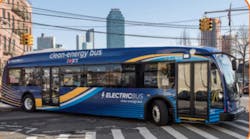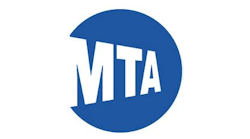OP-ED: Can MTA manage $15 billion in carryover capital projects with 2025 - 2029 Five Year Capital Program?
In 2020, the New York Metropolitan Transportation Authority (MTA) released a schedule of carryover construction projects from the 2010-2014 and 2015-19 capital plans. They pledged to commit $6.5 billion worth of prior planned capital program work in 2020 and $2.3 billion in 2021. This was supposed to complete the initiation of all capital projects and programs from the $29 billion 2010-2014 and $32 billion 2015-2019 capital plans. Coordinating management for this $8.8 billion worth of old capital projects with those from the new $51 billion 2020 – 2024 Capital Plan was challenging. How many of these projects have yet to be completed four years later?
All of the previously funded work (that was not under way) had to be integrated with the annual 2020 and following years Annual Track Outage, Force Account (in house employees), Routine Maintenance and Procurement Strategy plans for each MTA agency. This includes New York City Transit bus, subway, Staten Island Rail, Long Island and Metro-North Railroads, MTA Capital Construction and MTA Bus. It is necessary to support each agency’s respective capital programs. The plans provide a foundation to ensure projects will be initiated and completed on time and within budget, accompanied by a minimum number of contract change orders that have been documented as fair, reasonable and justified.
The agencies reorganization in 2020 was supposed to find $2.7 billion in savings. A significant part of these savings proved to be illusionary. This was part of the same old playbook promised by previous generations of MTA Chairs, MTA Board members and others going back generations. It never actually happens. These concerns and questions were never answered in detail.
Without reading the fine print, it will be difficult to believe the MTA can successfully manage $15 billion in yet to be initiated Congestion Toll funded projects with the next 2025 - 2029 Five Year Capital Plan. This will be far more challenging than spending the $8.8 billion from previous Five Year Capital Plans under the current 2020 - 2024 Five Year Capital Plan.
In the middle of a multi-billion-dollar and growing financial crisis accompanied by a record $48 billion in long-term debt, why does the MTA continue hiring and keeping employed several hundred million worth of outside consultants? Why can’t a significant portion of work assigned to consultants be performed by in-house staff and resources?
With New York Gov. Kathy Hochul placing congestion pricing on pause until January 2025 or later, the MTA will be forced to advertise, award and issue a Notice to Proceed to contractors representing $15 billion worth of projects funded by congestion pricing within the first year of the 2025 - 2029 Five Year Capital Program.
There are also billions in other ongoing capital projects not dependent on congestion pricing whose work will be carried over into the 2025 - 2029 Five Year Capital Plan. There may not be enough resources to integrate the implementation of $15 billion or more in carryover congestion pricing funded projects from the $51 billion 2020 - 2024 Five Year Capital Plan, or the billions more in ongoing non-congestion pricing funded projects from the previous 2020 - 2024 Five Year Capital Plan with those in the first and second year of the upcoming 2025 - 2029 Five Year Capital Plan.
The MTA lacks sufficient procurement, project managers, engineers, legal and force account employees, along with Track Outage Availability to proceed with all these projects in the same time frame. Billions of capital improvement projects will be delayed. Costs will increase due to inflation and other factors as time goes by.
The upcoming $51 billion 2025 - 2029 Five Year Capital Plan is due to be released in October 2024 and adopted on or before Jan. 1, 2025. This should include master integration schedules for staffing, procurement, annual track, force account and maintenance plans that document how the billions in carryover capital projects will proceed with billions more in the new five-year capital program.
MTA Board members, elected officials, city, state and federal funding agencies such as the Federal Transit Administration, commuters, taxpayers, transit advocacy groups and transit reporters need to see this critical information. It is the only way we can determine if the MTA is up to meeting the challenge.

Larry Penner
Larry Penner is a transportation advocate, historian and writer who previously served as a former director for the Federal Transit Administration Region 2 New York Office of Operations and Program Management. This included the development, review, approval and oversight for billions in capital projects and programs for New Jersey Transit, New York Metropolitan Transportation Authority, NYC Transit bus, subway and Staten Island Railway, Long Island and Metro North railroads, MTA Bus, NYCDOT Staten Island Ferry along with 30 other transit agencies in New York and New Jersey.





